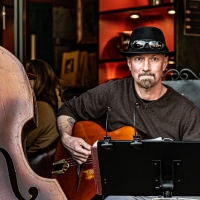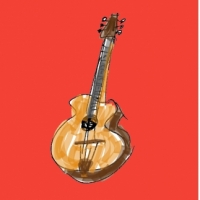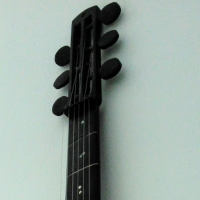DjangoBooks.com
Welcome to our Community!
Categories
- 20K All Categories
- 1.1K General
- 478 Welcome
- 59 Archtop Eddy's Corner
- 146 CD, DVD, and Concert Reviews
- 385 FAQ
- 26 Gypsy Jazz Italia
- 27 Photos
- 203 Gypsy Picking
- 21 Unaccompanied Django
- 15 Pearl Django Play-Along Vol.1
- 17 Gypsy Fire
- 45 Gypsy Rhythm
- 1.4K Gypsy Jazz University - Get Educated
- 131 Gypsy Jazz 101
- 228 Repertoire
- 221 History
- 708 Technique
- 51 Licks and Patterns
- 6 Daniel Givone Manouche Guitare Method Users Group
- 20 Eddie Lang Club
- 1.3K Gypsy Jazz Gear
- 803 Guitars, Strings, Picks, Amps, Pickups and Other Accessories
- 461 Classifieds
- 49 Recording
- 62 Other Instruments
- 18 Violin
- 5 Mandolin
- 22 Accordion
- 7 Bass
- 10 Woodwinds
- 348 Gypsy Jazz Events
- 143 North America
- 110 Europe
- 95 International
In this Discussion
Who's Online (0)
Dec. Song Of The Month--My Melancholy Baby
 MikeK
Asheville, NCNew Altamira M-30 D-Cedar, Gitane DG-320 John Jorgensen
MikeK
Asheville, NCNew Altamira M-30 D-Cedar, Gitane DG-320 John Jorgensen
This month's song of the month is so fun to play that I have to remind myself not to call it too often, just to keep it special for my bandmates & myself. It was written in 1912 by Ernie Burnett & George A. Norton. It seems to have become really popular when Gene Austin recorded it in 1927, and that was followed by many other famous vocal versions, notably Bing Crosby. Some of my favorites among them are recordings by Ella Fitzgerald & Mildred Bailey.
My favorite Django version of it was recorded with the Hot Club in Paris in 1939. Here's a link to it:
I call it in C, but the other guitar player in my band calls it in Eflat. Either way, it's super fun, especially with all that chromatic stuff in the head. Attached is the chart I use.














Comments
https://www.youtube.com/watch?v=bqiu8OVrro0
This is such a great tune and played by scores of great musicians. Here are a couple of rarities. That recording by Svend Asmussen from 1940 has always been a favorite of mine and this is one of the best cuts from that session. The one with Jorge Diaz and the Eduardo Ravez Trio is also a classic. Ravez is nearly unknown in the USA but he's a legend in Argentina and can be heard as the soloist on most of Hernan Oliva's recordings.
Seems like Django played it in E?
I'm transcribing a couple of nuggets from Django, will try to find time to make a short video.
One of my favourite tunes! Aside from Fapy's great rendition on his Hungaria album, I love this version by Lee Konitz!
Liked the phrase he plays over E at the start of second chorus. Which is really a E major pentatonic. Then I learned a few things before and after. Some of these really stump me as to how come they work. Like over C#7 he seems to be playing straight up D chord line. If I sing the lines as I play the chords, it's just nice. Not sure if I'm looking at it right.
Then I improvised slowly over Coquette using some of it, some pretty much verbatim and some inspired.
Scot--nice vintage footage you posted, thanks for doing that. Wicked harmonica. You as well, Phil. It's cool to hear this classic handled so deftly on the sax. My favorite part of doing the song of the month is when I get to dig in to all the cool versions the forum members share. Keep it up. It's a history lesson as well as a music lesson. And speaking of music lessons, thanks for posting your explorations, Dr. Buco. You always have a knack for keeping us all inspired to broaden our understanding of the genre.
Thanks Mike. Hopefully it helps conversation flow and hey, I benefit, I just learned something new. But still couldn't figure out what's going on where he plays a line that comes from D chord shape, over C#7. The shape could be seen as B-7 but Dorian because then it would have a major 6 interval, which that makes even less sense. The notes are F# A D F# A G# F. Even in the context of D chord, A G# F line is a little odd. He plays similar line up the fretboard again but this time it is over D. Not sure what's going on, but it sure sounds nice when you just whistle it while playing chords. I suspect it may be the reason it works is because Django had some kind of harmonic development in mind which maybe didn't follow the chord progression exactly. So, it works as a part of a big picture, but you couldn't take this phrase and try to play it over a dom7 chord in a different tune. I'll put a couple of things I learned that I could use into my regular practice rotation.
Coleman Hawkins
Ray Charles
Here's a nice version of the tune played by Maurice Ferret and Joseph Pouville
They played in duo almost every night in Paris Montmartre at the "Clairon des chasseurs" for moreless 40 years
Maurice played lead on a Favino D hole 12 frets with a S51 Stimer pickup and Joseph played rhythm on a Gibson ES125T stringed 13-56. Both were plugged into the same big Fender Amp.
Django recorded Melancholy Baby 5 times. The first time was with an accordion (1938) , and in the key of C. Appears the other 4 were in Eb.
I think the one Mike posted above must be in E because he plays open e string in that lick I transcribed above.